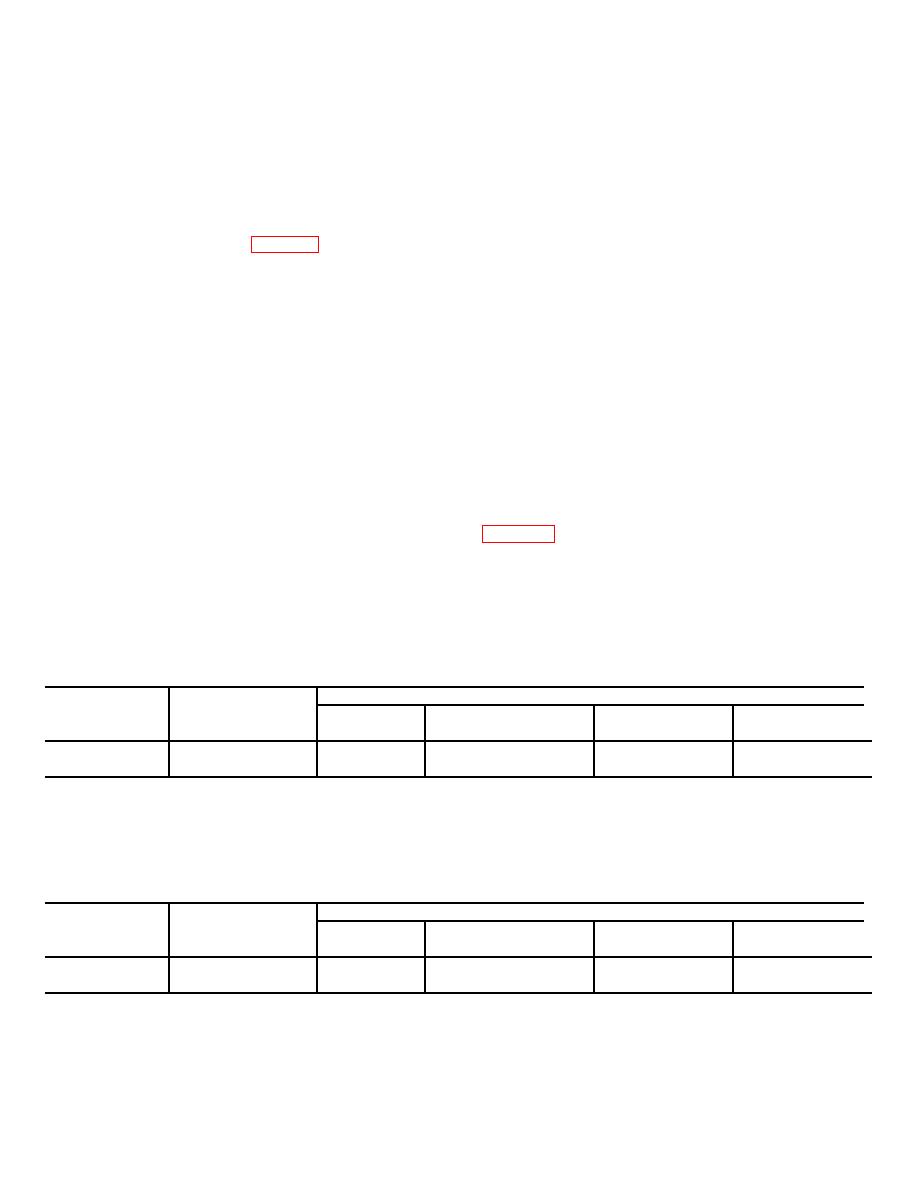
TM 9-1330-200-11/OP 3833 1st Rev. Vol 2, CH-2 TM 1330-12/1A CH2
(c) Category C. Mortar ammunition
(a) Ammunition
items
having
and hand grenades, except incendiary and chemical.
comparable storage risks are grouped together in the
same storage category.
(d) Category D.
Pyrotechnics and
(b) Within each storage category, the
chemical ammunition of all types, including chemical
,filled rockets; gas, smoke, and incendiary bombs; gas
maximum quantity of ammunition to be stored within
and smoke artillery ammunition; incendiary and
each stack and within each Field Storage Unit (FSU),
chemical grenades, smoke pots, GB and VX filled
and the minimum distance between FSU's and the
mines, and bulk packed incendiary and small-arms
minimum distance between FSU's and categories, are
tracer cartridges.
specified in quantity-distance table 4-1 through 4-5 for
the storage of ammunition in the field.
(e) Category E.
All Demolition
(c) Normally, only one kind of
explosives, antitank and antipersonnel mines (except
GB and VX loaded), and components such as blasting
ammunition is stored in a stack. Ammunition should be
caps, firing devices, detonating cord, and safety fuze.
arranged in stacks in the best manner to facilitate
inventory and inspection. Where camouflage is a
(f) Category F.
Rockets, rocket
consideration, stacks may be stepped in toward the top
motors, and rifle grenades, except chemical.
(terraced or pyramid stacking) to decrease shadows.
(g) Category G. The following items of
Whenever desirable, components of complete rounds
Air Force class V supply-all unfuzed high-explosive
may be stored within the same FSU.
bombs, aircraft mines, aircraft torpedoes, and
(d) Small-arms ammunition, except
fragmentation bombs, fuzes and/or primer-detonators
bulk packed incendiary and tracer cartridges (which
for the above items; and fragmentation bomb clusters,
must be stored in category D) may be stored with any
fuzed or unfuzed. The remainder of Air Force class V
category.
items must be stored in other applicable categories.
(2) Categories for storage of conventional
b. Quantity-Distance Tables for Field Storage
ammunition.
For storage purposes, conventional
Categories. Procedures set forth in quantity-distance
ammunition is divided into the following categories:
(a) Category A. Fixed and semifixed
storage of ammunition in the field only.
These
procedures are based upon the necessities incident to
artillery ammunition, except incendiary and chemical.
the storage of ammunition in the field. It must be
(b) Category B. Propelling charges,
emphasized that any reduction of distances or increase
fuzes, primers, flash reducers and separate loading
in tonnages to those prescribed increases the probability
artillery projectiles including HE and AP, but excluding
of loss of life and ammunition.
incendiary and chemical projectiles.
Table 4-1. Category A, B, or D
Minimum distance in feet between
Gross tons
Gross tons
Stacks
Stacks
FSU
per stack
per FSU
Unbarricaded
Barricaded
Unbarricaded
Categories
Less than 10...
400
40
30
300
750
10-20 max.
400
50
40
300
750
NOTE
If desirable, fixed and semifixed smoke ammunition, except WP., may be stored in category A.
The minimum distance between a stack of propelling charges and any other stack must be 100
feet whether barricaded or unbarricaded.
Table 4-2. Category C
Minimum distance in feet between
Gross tons
Gross tons
Stacks
Stacks
FSU
per stack
per FSU
Unbarricaded
Barricaded
Unbarricaded
Categories
Less than 10...
300
75
60
300
900
10-20 max.
300
105
75
300
900
4-2

